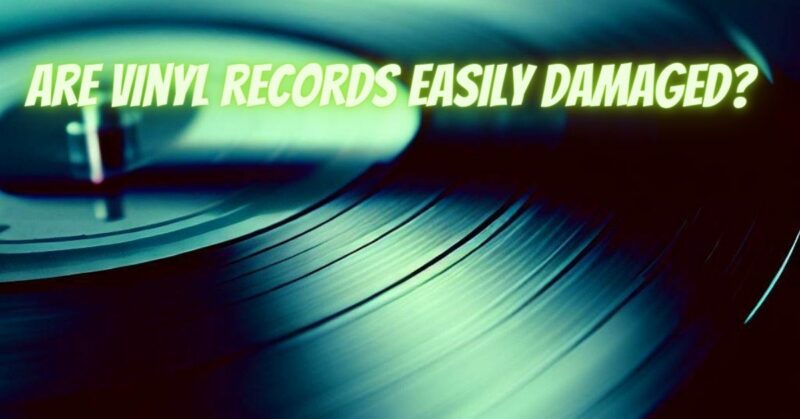Vinyl records, beloved for their warm sound and nostalgic appeal, are often treasured by music enthusiasts and collectors alike. However, their delicate nature demands careful handling and maintenance to ensure their longevity and continued enjoyment. This article explores the inherent fragility of vinyl records, the factors that contribute to their vulnerability, and the best practices for protecting these musical artifacts.
1. The Fragile Grooves:
Vinyl records are essentially made up of delicate grooves that contain the audio information. These grooves are intricately carved and hold the key to the record’s sonic magic. While this design allows for exquisite sound quality, it also renders records vulnerable to various forms of damage.
2. Susceptibility to Scratches:
One of the primary vulnerabilities of vinyl records is their susceptibility to scratches. Even the tiniest particle of dust, a careless touch, or an accidental slip of the stylus can result in scratches that impact sound quality and playback performance.
3. Warping and Distortion:
Vinyl records are sensitive to temperature fluctuations and direct sunlight. Exposure to heat can cause records to warp, resulting in uneven playback, skips, and even permanent damage to the grooves. Warping can also lead to distorted sound quality, affecting the overall listening experience.
4. Groove Wear:
With each play, the stylus of the turntable makes contact with the grooves on the vinyl. Over time, this repeated friction can lead to groove wear, causing a gradual loss of audio fidelity and clarity.
5. Environmental Factors:
Vinyl records are impacted by environmental conditions, including humidity levels, temperature, and exposure to light. Excessive humidity can lead to mold growth and the degradation of the vinyl material. High temperatures can cause warping, while direct sunlight can fade the album covers and deteriorate the vinyl.
6. Poor Handling:
Improper handling of vinyl records is a significant factor in their potential for damage. Fingerprints, oils, and rough handling can introduce debris and scratches onto the record surface.
7. Preventive Measures:
While vinyl records are delicate, there are steps you can take to minimize the risk of damage:
- Cleanliness: Keep your records clean by using a soft brush or a record cleaning machine to remove dust and debris before playback.
- Proper Storage: Store records vertically to prevent warping and use high-quality inner and outer sleeves to protect them from dust and potential scratches.
- Gentle Handling: Always handle records by their edges and avoid touching the playing surface to prevent introducing oils and debris.
- Avoid Heat and Sunlight: Store records in a cool, dry place away from direct sunlight and extreme temperature fluctuations.
- Proper Turntable Setup: Ensure that your turntable is properly calibrated, with accurate tracking force, alignment, and anti-skate adjustments to prevent excessive wear and tracking issues.
8. Regular Maintenance:
Regularly inspect your records for visible damage and clean them before each play to prevent debris from causing additional damage.
9. Expert Restoration:
If you have valuable or damaged records, consider seeking assistance from professional record restoration services to address deep scratches, groove wear, and other forms of damage.
Vinyl records are a delicate blend of art and technology, offering a captivating sonic experience. Their susceptibility to scratches, warping, and groove wear underscores the importance of treating them with care and respect. By understanding their vulnerabilities and implementing proper handling, storage, and maintenance practices, you can ensure that your vinyl records continue to provide the timeless joy of music for generations to come.


